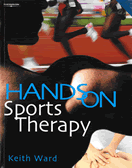|
Product Information:
|
Assessment FormsAssessment forms and artwork - click on the links below to see pdfs of the forms. Form 1 > Form 2 > Form 3 > Form 4 > Form 5 Form 1. Sports Therapy Consultation Form
FORM 2. Sports Therapy Record Card Therapists are required by law to keep up to date, legible and accurate records. The client’s record card must be safely and confidentially stored (along with the consultation form and any other forms filled in with regard to their personal details, including: physical assessments, fitness tests, exercise programmes and action plans). By keeping up-to-date client records, a more effective evaluation of progress is enabled and, also, the appropriateness of the strategies being employed can be better assessed. Client records must be written up (in permanent ink, and using no correction fluid – any corrections should be initialled) after every treatment, and within 24 hours. All entries should be dated and signed by the therapist.
FORM 3. Physical Assessment Form (Three Separate Pages) In the sports therapy clinic, it can be helpful to use physical assessment forms that have all main tests and assessments already listed. All that then remains for the therapist is to: correctly provide the assessments; record the results (ticking where appropriate, stating any measurements and making comments); compare the results against previous results and against recognized norms; explain the results to the client; make particular recommendations in light of the results. Both client and therapist should date and sign at the foot of the document. The sample fitness test form provided allows for the results of three fitness tests to be documented (for ease of comparison). Whichever particular test protocol being utilized must be specifically documented, and any comments relating to the client’s results must be made (e.g. poor, fair; good; excellent; better than last time). The positives and negatives of each test should be identified, objectives reviewed (in light of the test results), and recommendations made. If a particular test is not being taken, write ‘n/a’ (not applicable). Both client and practitioner should date and sign at the foot of the document.
FORM 5. Sports Therapy Action Plan The sample sports therapy action plan should help the therapist and client to identify and agree on the main objectives, decide the best methods to achieve these objectives, and plan for the provision of appropriate activities. The client can be given a copy of the (detailed) action plan to take home. Both client and therapist should date and sign at the foot of the document. It is important that you are familiar with human anatomy and physiology in order to prepare you for the practical work in the textbook. We have some comprehensive diagrams in the text to illustrate the structure of the body as a whole and we have reproduced these on the website so that you can print them out for revision. We have also provided blank diagrams for you to label yourselves in order to test your knowledge before an exam. Click on the links below to download a pdf of selected images (please note each image has two versions, one with labels and one without for the student print out and fill in).
|

